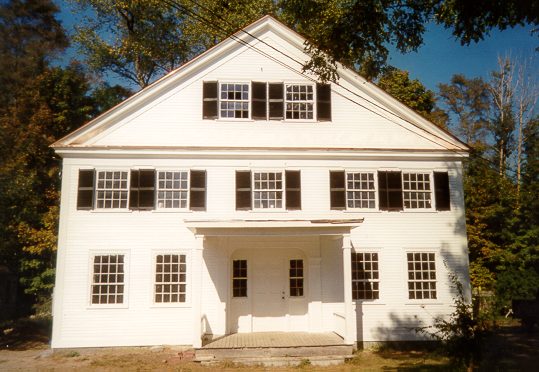|
Originally this piece of land was part of the northern tip of an acre Lot #70 in the first division granted to a man named Abraham Merrill. In the late 1700s the entire 80 acres was sold to John Currier, who in 1792 turned around and resold it to Isaiah Flanders and Asa Bates. A few months later those two men decided to split the lot between them, and Isaiah Flanders ended up with the northern 30 acres.
Read more... |
According to the two Warner history books – the one book by Walter Harriman and the other prepared by the Warner Historical Society, the first church and meeting house was built on Parade Road in 1766 with Reverend William Kelly as the Orthodox Congregationalist clergyman. That church burned down and a new one was erected on the same spot in 1770. In 1789 after much dissension among church members, a new place of worship was built under the ledge on the other side of the river in Lower Warner. Later in 1819 this church and meeting house was abandoned and a new one built a little to the west of the previous one.
Read more... |
Built around 1817, this Federal style house was first occupied by Ezra Barrett from about 1817-1845. As one of the very first deacons of the Congregational Church in Warner, he lived there and ran a scythe-snath shop near the house until 1830. During the late 1840s, a Doctor Parsons Whidden lived there and entertained a summer guest, Mary Baker Eddy, in the year 1849. Later, storeowner Erastus Wilkins lived in the large house in 1858, as he operated his stores in Lower Warner and the center of town.
Read more... |


